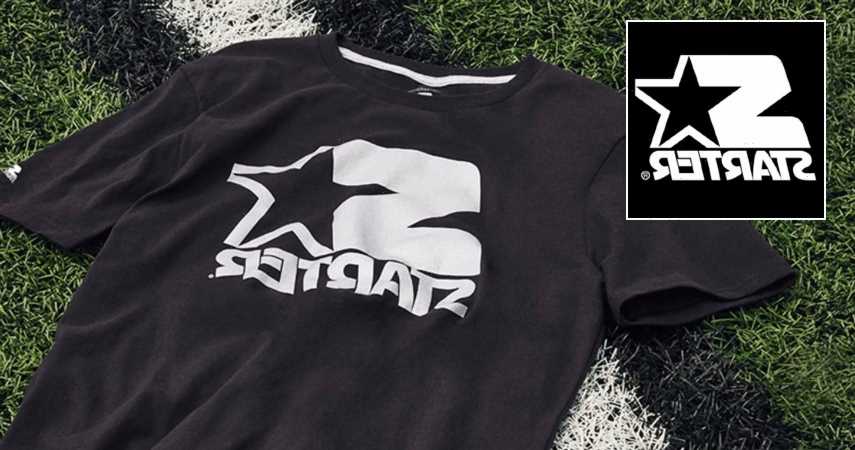Starter jackets were on of the biggest trends to appear in the ’90s Some would say that the sports centric apparel company is practically synonymous with the decade, with prominent athletes and mega stars alike sporting the jackets.
From 49ers footballer Joe Montana wearing one in his SNL appearance to DJ Jazzy Jeff promoting the brand in commercials, it was virtually impossible to escape from the Starter jacket craze.
Here’s the story of how the brand became a national phenomenon!
RELATED: Crazy Rich Lids: 7 Most Expensive Celebrity Hats
Starter’s Start
Before Beckham was the famous soccer coach that we know today, he had a day job working as a cashier for the sportswear store Duckster. It was there that the former college athlete noticed a lack of flare in the clothing offered for sports fans. Seeing an opening in the market for quality and stylish sporting apparel, Beckerman launched Starter in 1971.
Housed in New Haven, Connecticut, he used $25K from his savings and borrowed $50K to start his ambition journey of creating this now infamous brand. He recieved help from an investor named The initial goal for the company was to curate flashy uniforms for high school sports teams. Any sports fanatic would see that the brand’s name is a reference to the starting player in a game – the one who sets the bar for.
Beckerman started out with no factory and just one sample of a jacket design that was crafted from a local tailor shop. He went on to sell his jackets to local sporting goods stores up until 1976. By that time, he changed his attention to remaking and selling uniforms of professional athletes.
A post shared by Starter (@starterofficial)
“I said ‘Look, I’m an adult and I’d really like to have something from my favorite team,” Beckerman explains to local newspaper The Montgomery Advisor in 1993, “but there really was nothing available.’ I felt that their was a void in the marketplace as it related to fan appeal and fan loyalty.”
He lucked out when he brought the idea to Major Baseball League and National Football League, as they weren’t quite interested in the idea upon him pitching the uniforms. Though he caught the attention of baseball big wigs and, within seven years time, he began signing leasing deals for over 100 different college teams. After years of rejection, the NFL followed suit in 1983.
Starter Takes Over the 90’s (Then Ultimately Falls)
When the 90’s came around, Starter became bigger than ever. Beckerham was making some big moves to further implement the iconography of Starter into the culture. Seeing the growing trend of teenagers wearing their hats backwards, he started selling caps with the brand’s logo on the back. The was pivotal moment in fashion as Beckerman was the first to ever put a logo on the back of a cap.
He also made haste in getting Starter some big screen promotion. He reached out to several directors to get his jackets worn by actors in movies. He was successful as Eddie Murphy was seen rocking Starter in Coming to America, a huge win for the brand.
The decade saw the company racking $350 million in revenue, according to Uproxx . It’s products were being sold in 25 different countries. The brand became a huge part of hip hop culture with various rappers wearing the jackets. 2 Live Crew’s debut album saw the rap group sporting Miami Heat Starter jackets. Run DMC was another rapper that was often seen repping the brand.
A post shared by Starter (@starterofficial)
But the trend didn’t last for too long. During the mid-90’s, Starter saw itself in a bit of trouble. A number of things went into the decline of Starter, but one of the most egregious was the onslaught of violence seen by teens wearing the brand. Around that time, there were tons of cases where teenagers would be either robbed or shot for their Starter jackets.
Another downfall of the brand were the sports strikes of the 90’s. When the MBL cancelled their it’s postseason because of its players refusing to play – and the subsequent canceling of the NHL season – Starter was left without a sport to represent.
After accumulating $120 million of debt by the end of the decade, the company was forced to file for Chapter 11 bankruptcy.
The 00’s Resurgence
Nike offered to buy Starter back in 1992 to no avail. But, as the company was almost on the outs, Beckerman decided to allow Nike’s CEO Phil Knight to acquire the brand in 2004. The brand was then sold again in 2007 to Iconix.
“Starter is an iconic brand that diversifies our portfolio of holdings by moving us into the athletic apparel, team sports and athletic footwear categories,” Iconix CEO Neil Cole told Nike News in regards to the sale, “We are very excited to be working with Wal-Mart on this project and believe that with their reach and our marketing expertise Starter has the potential to become one of the largest athletic apparel and footwear brands in the world.”
The company revived Starters by cashing in on the nostalgia hungry consumers who remember when the satin jackets were the hottest item on the market.
A post shared by Starter (@starterofficial)
While Iconix is reluctant to disclose the exact numbers of performance of Starter’s performance, the company’s vice president Carolyn D’angelo describes it as a, “healthy brand for us in our sports portfolio, which is growing. It’s done wonderful business.”
Read Next: Pricey Kicks: Some Of The Most Expensive Shoes Ever Sold
Sources: Mental Floss, The Montgomery Advisor Nike News, The Post Game
Source: Read Full Article
